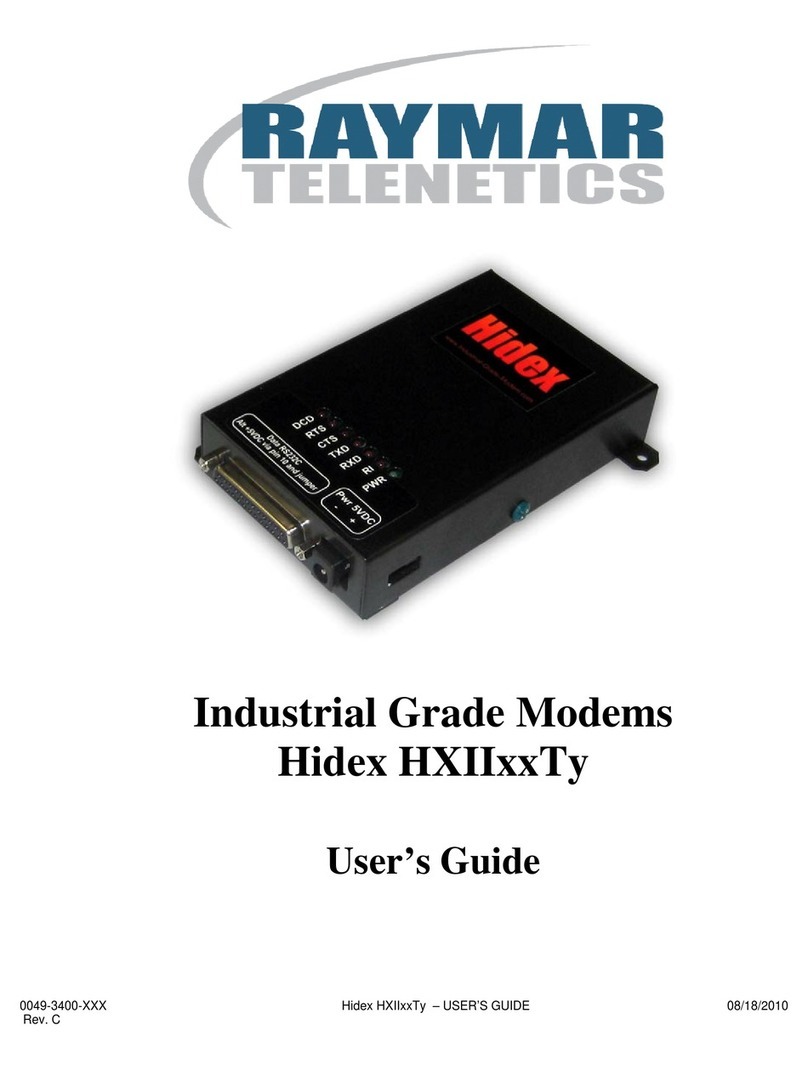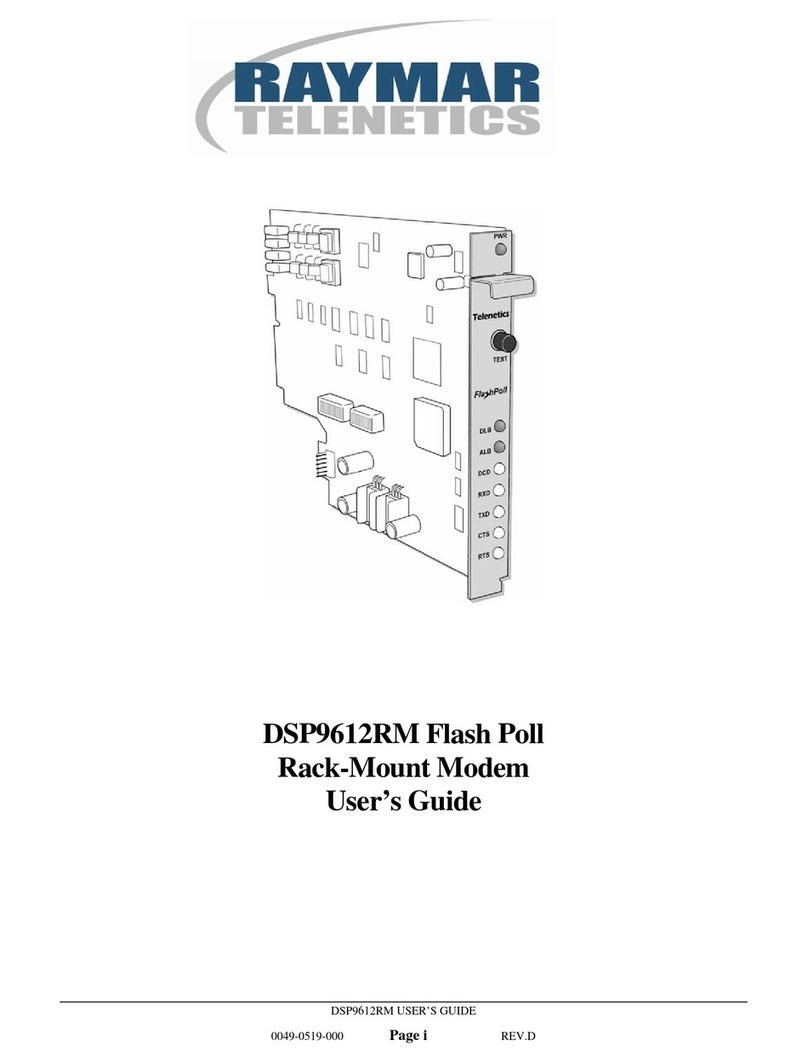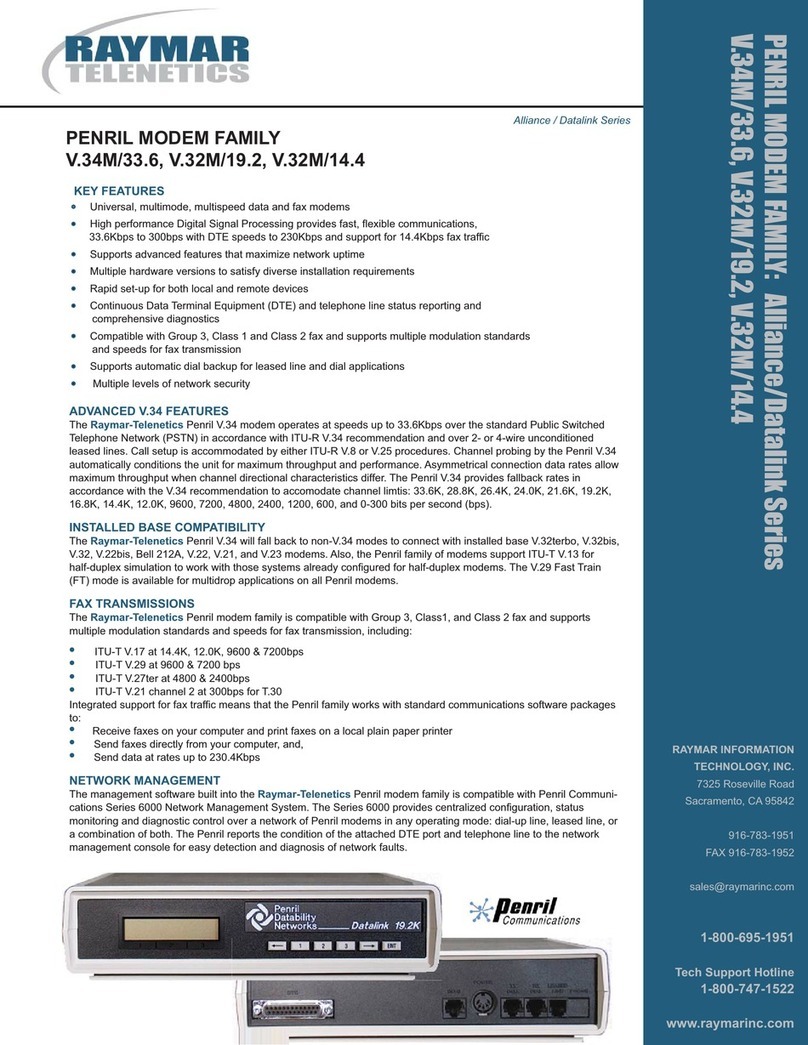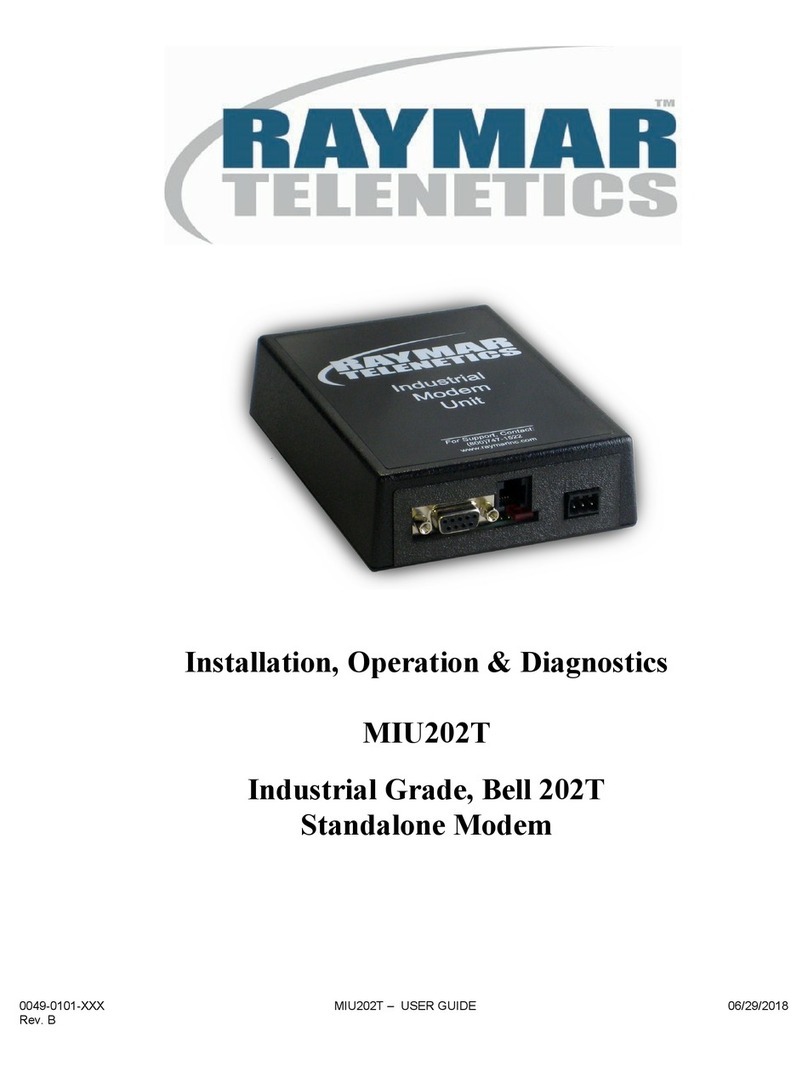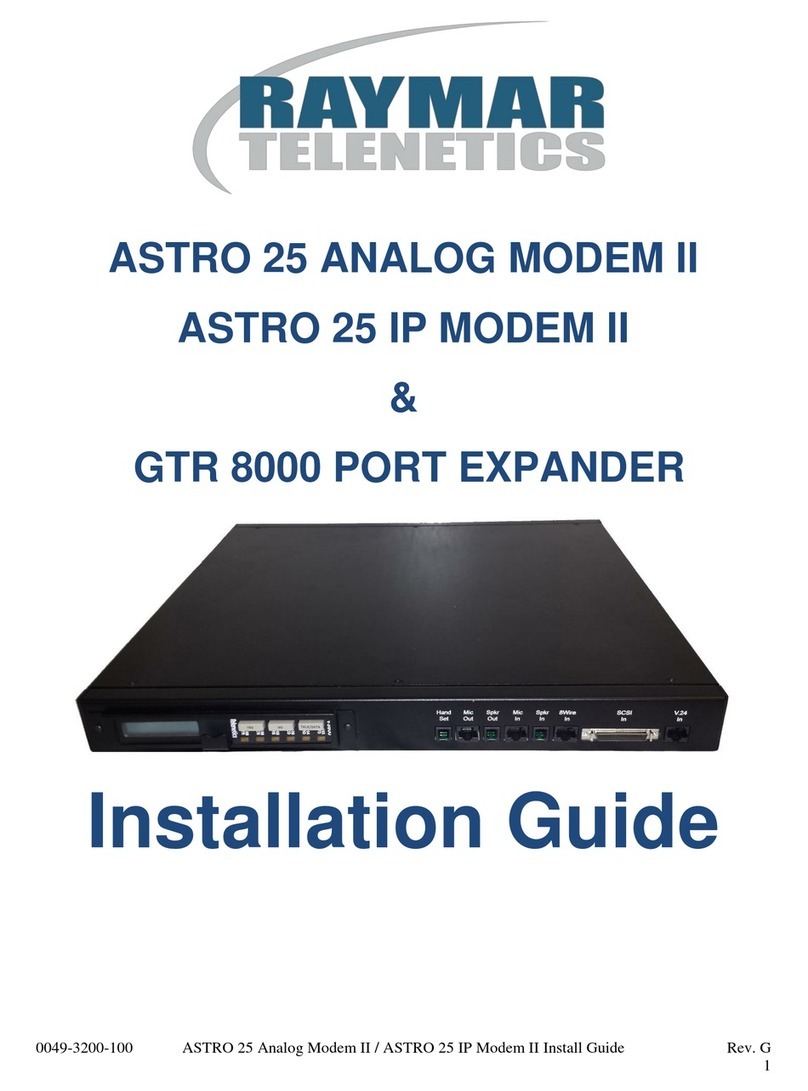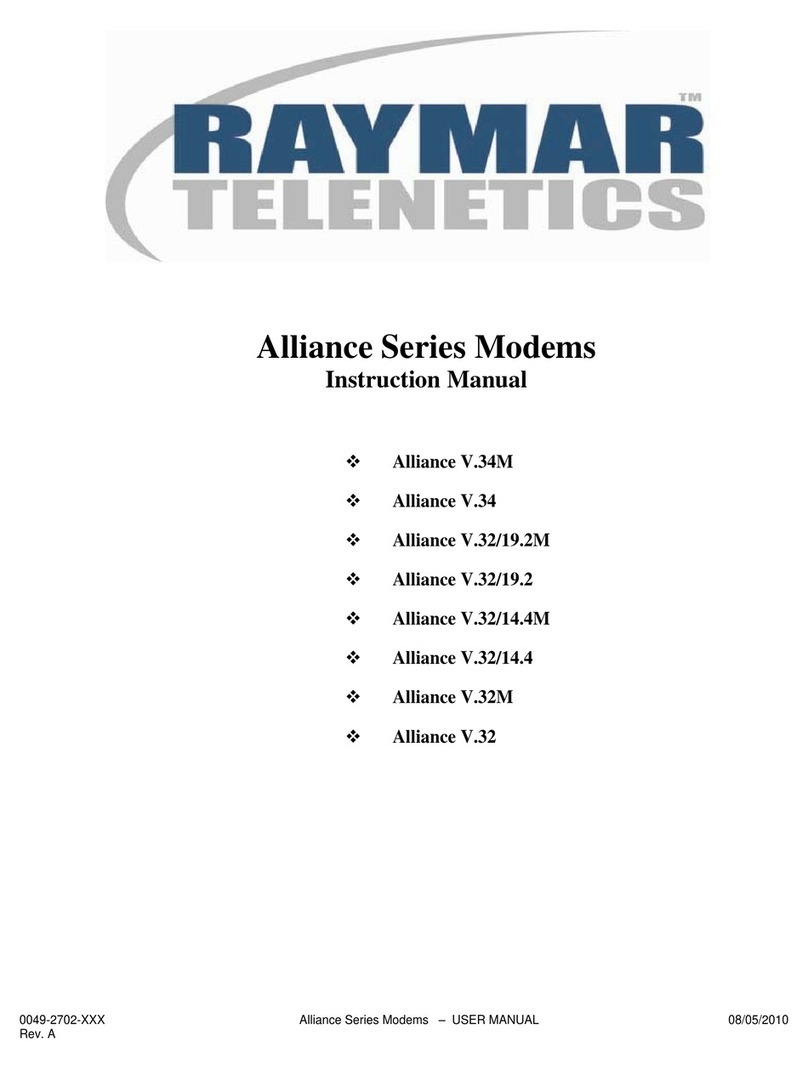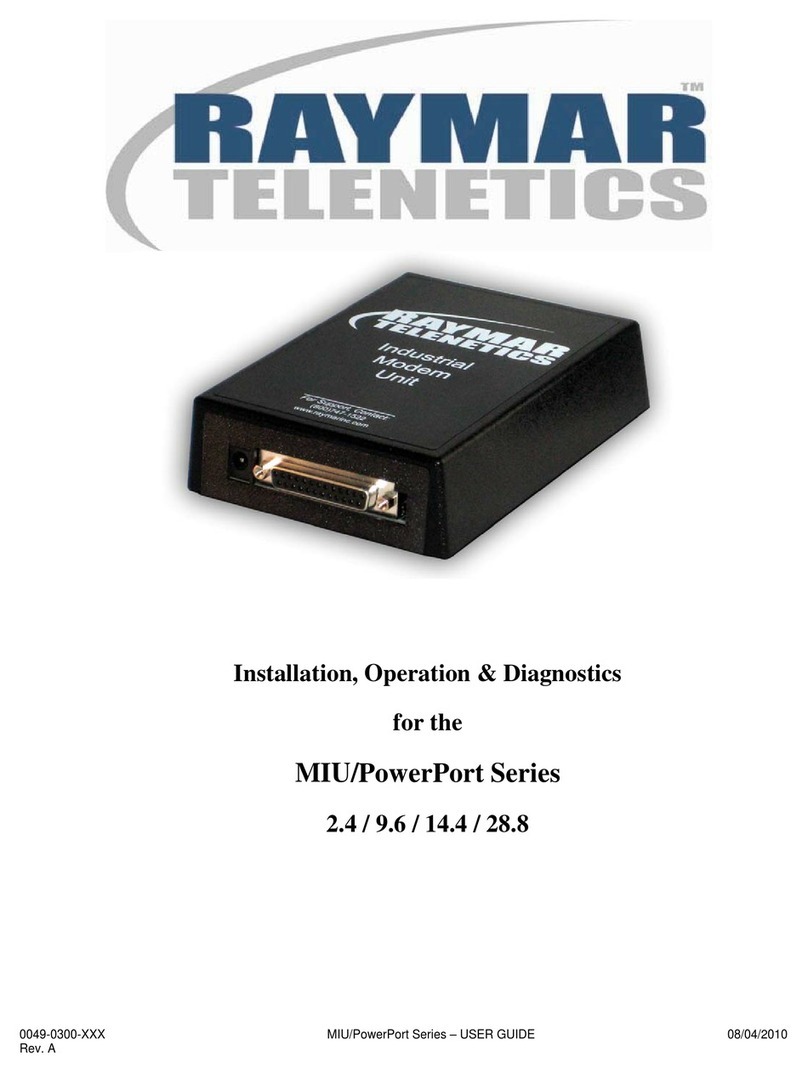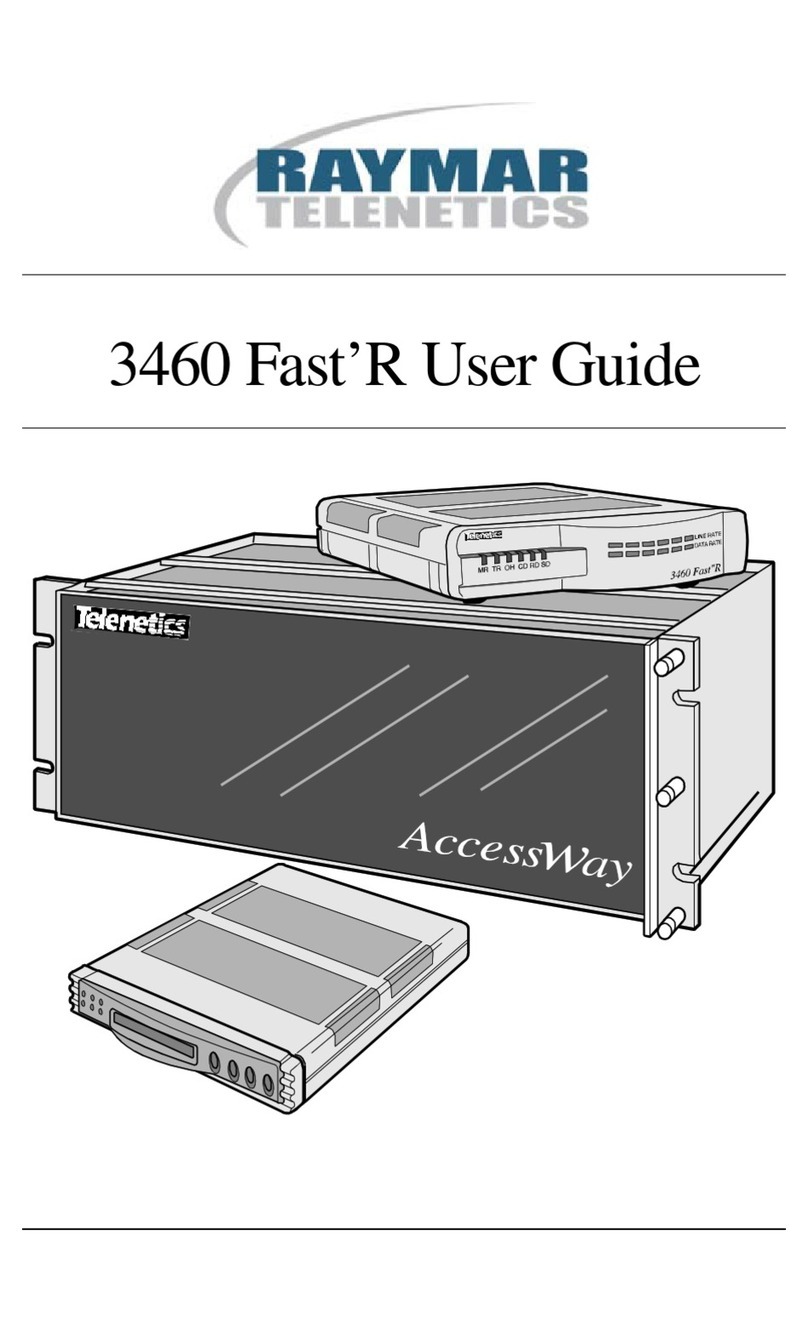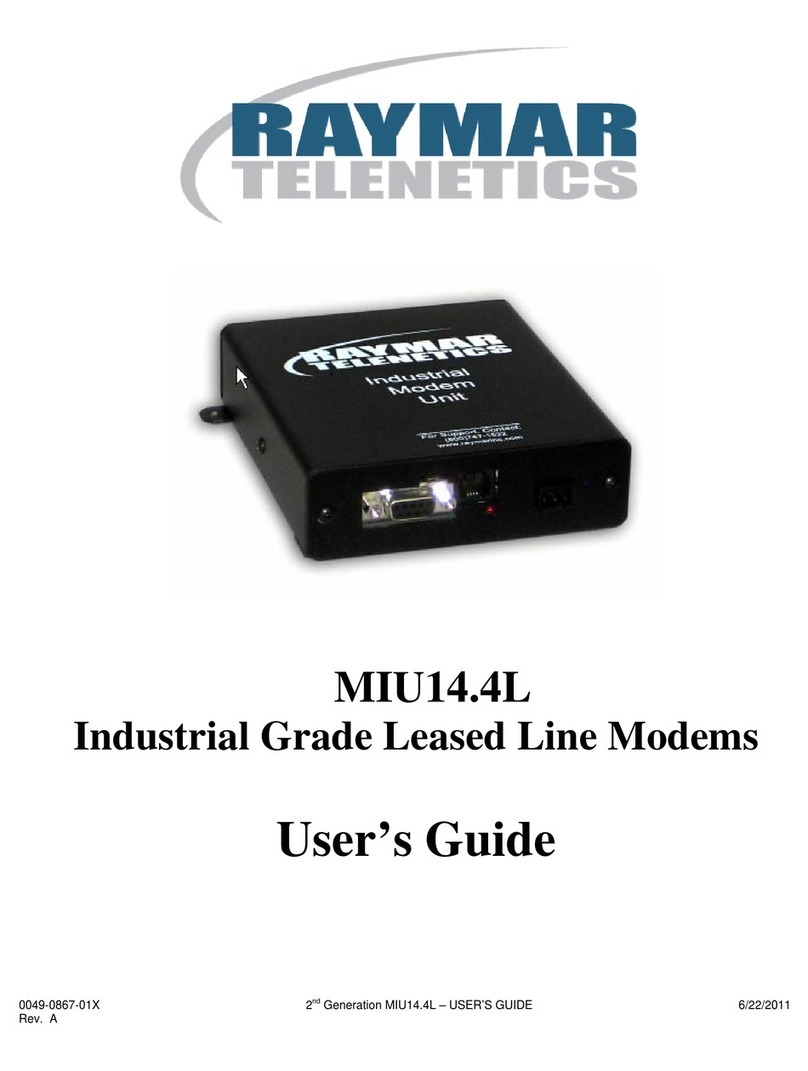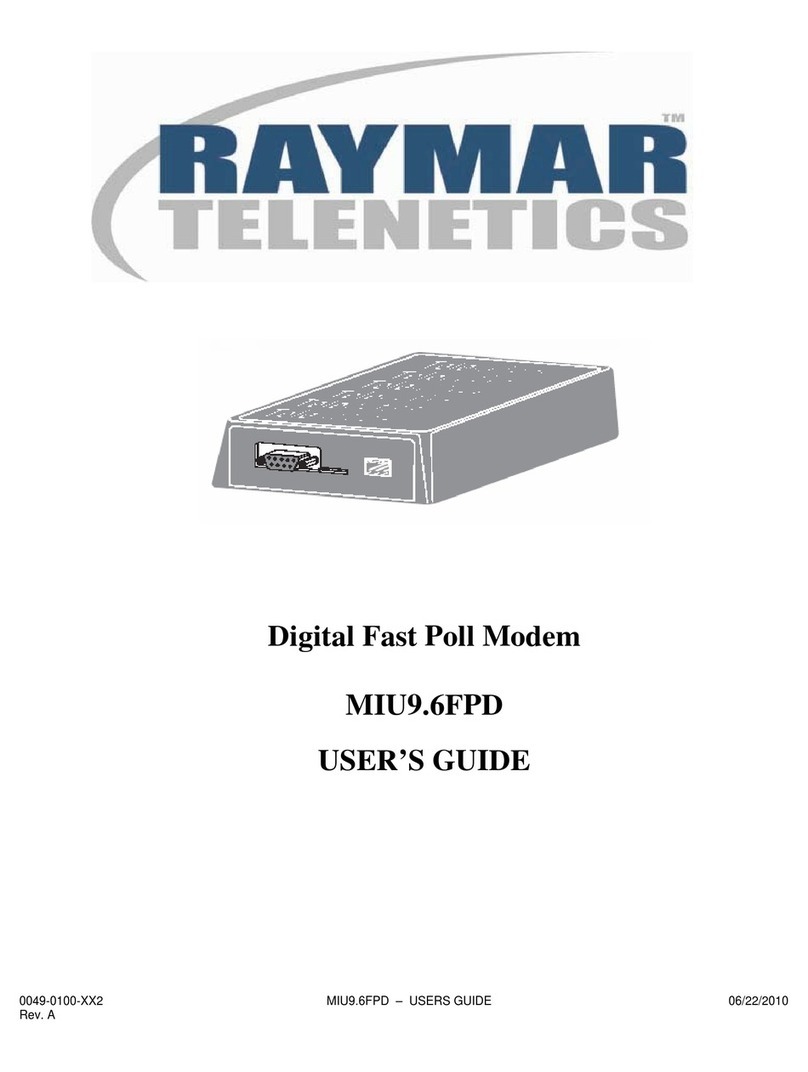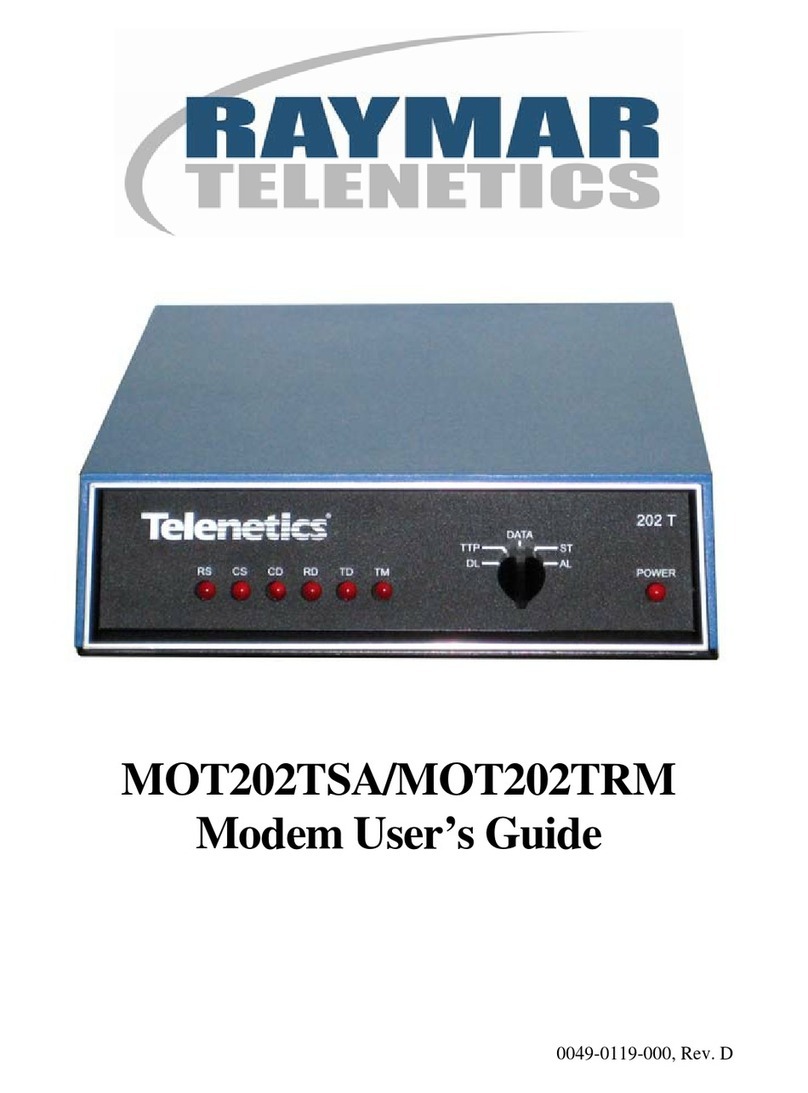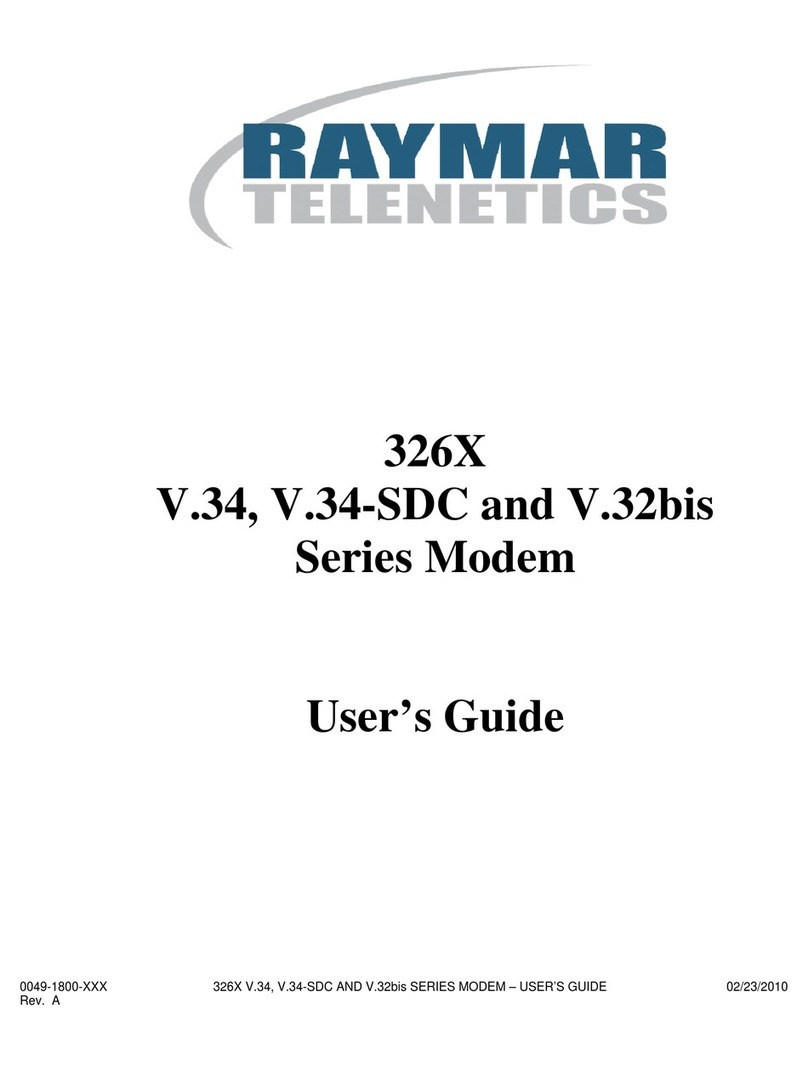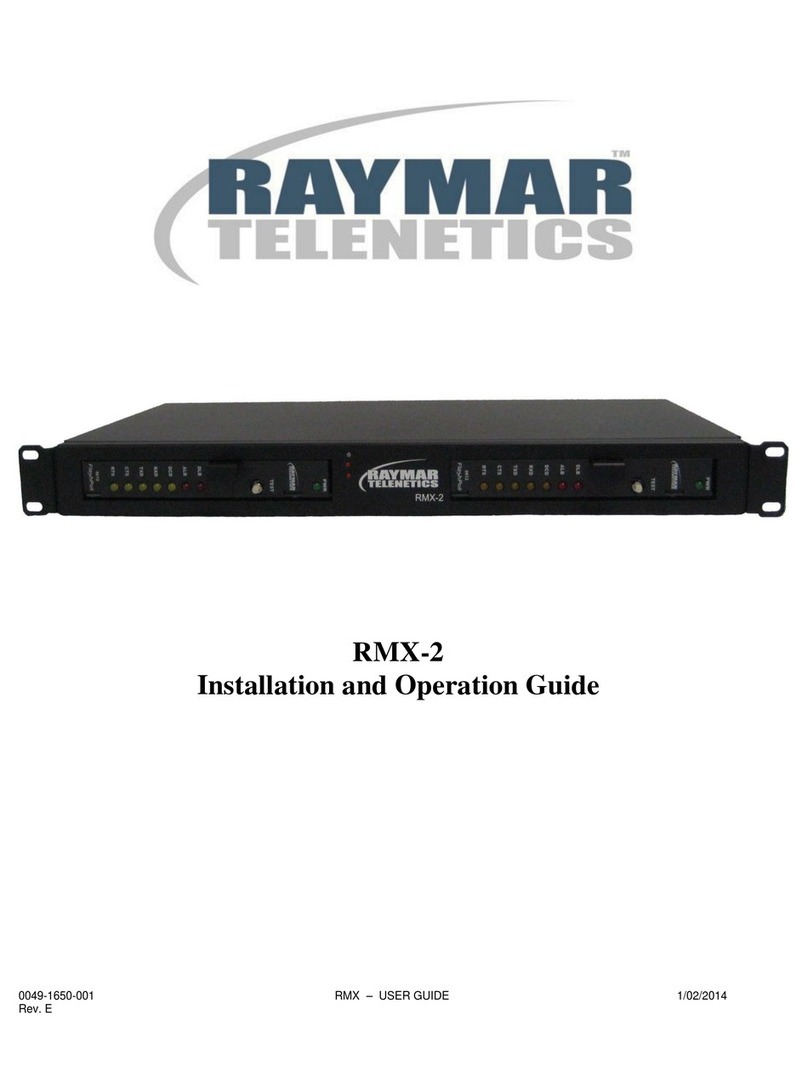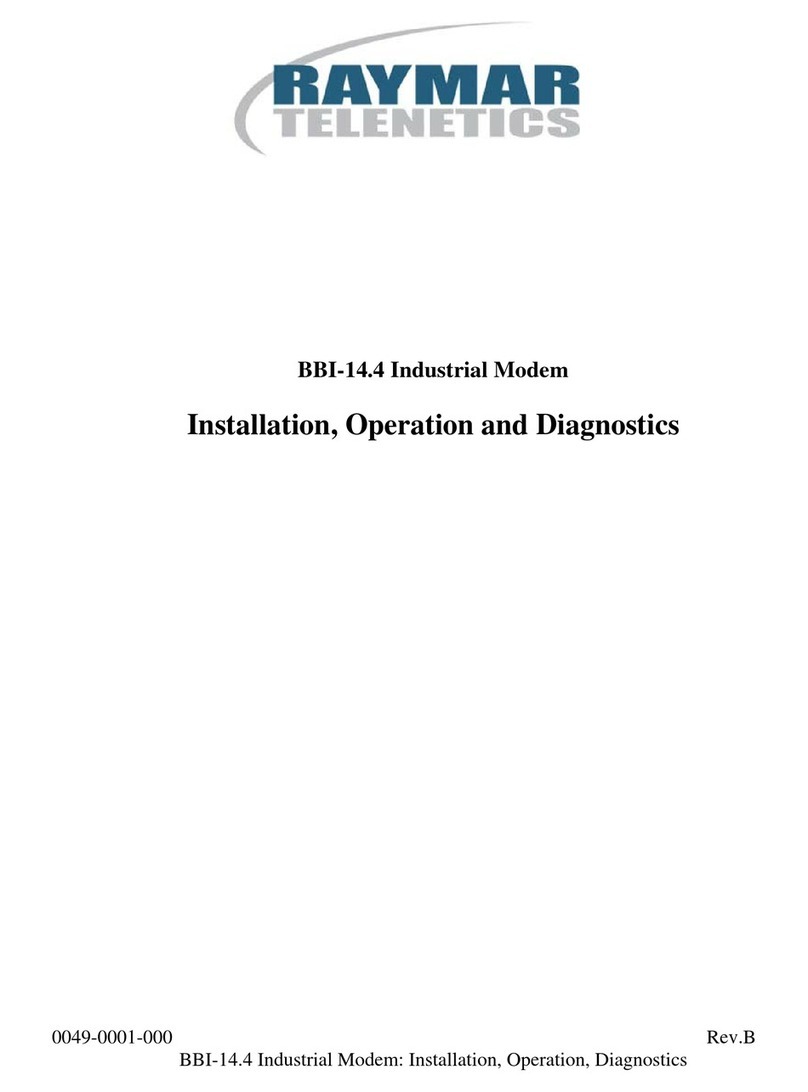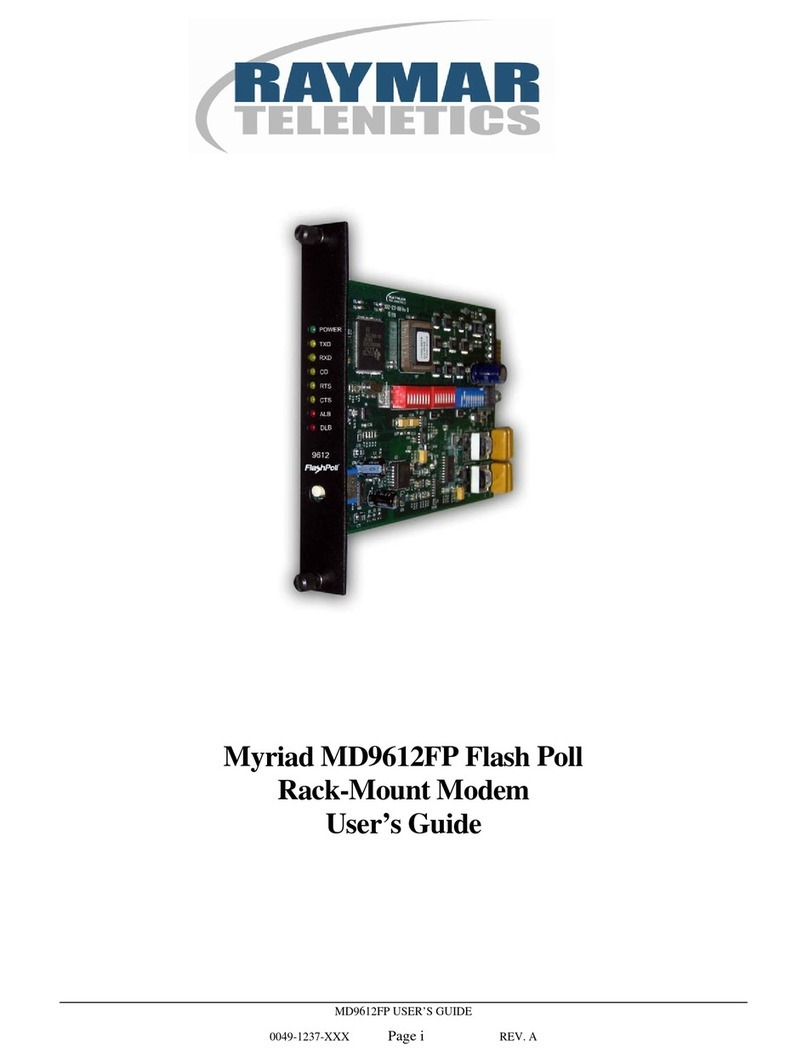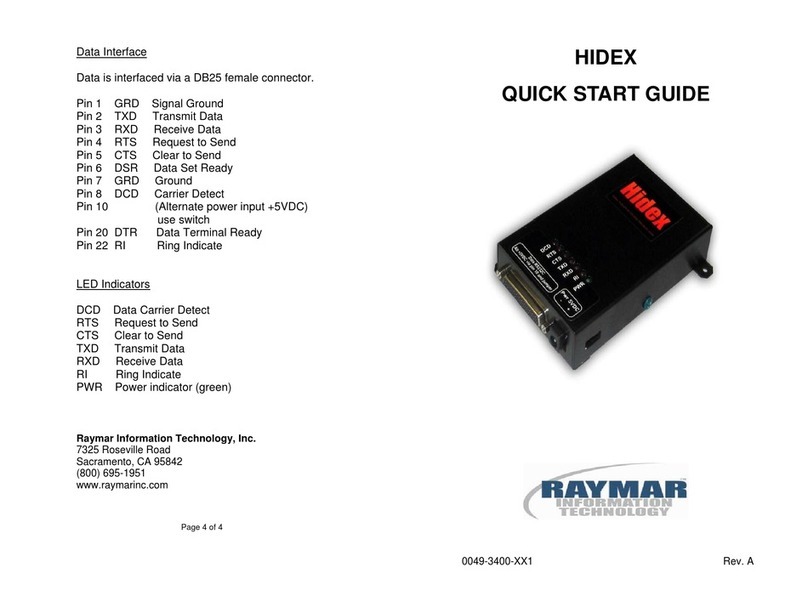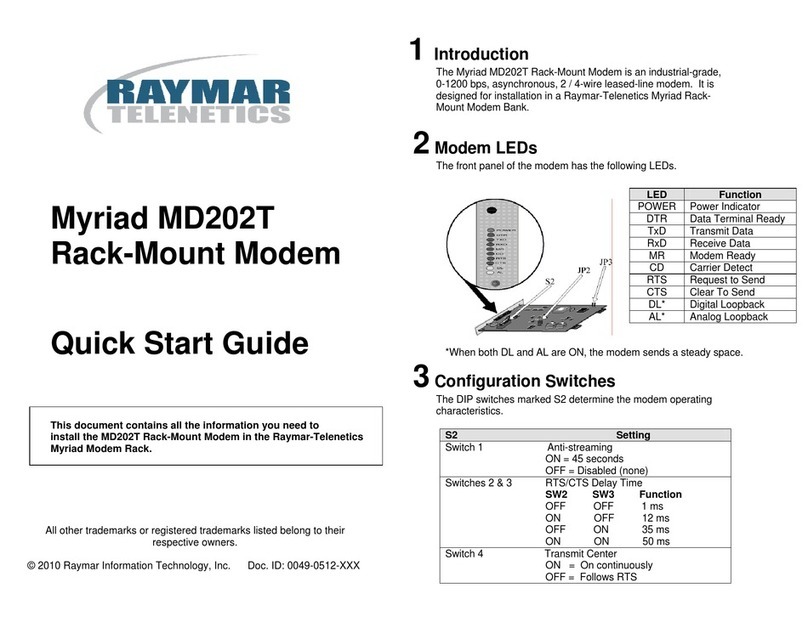
0049-0117-100 DSP9612 Flash Poll Modem – User Guide 10/12/2011
Rev. F1 Page 3 of 44
Contents
CHAPTER 1 INTRODUCTION ………………………..5
FEATURES ………………………………………………...6
APPLICATIONS …………………………………………….7
CHAPTER 2 INSTALLATION …………………………9
UNPACKING YOUR HARDWARE ………………………….. 9
ADDITIONAL ITEMS YOU NEED ……………………………9
HARDWARE OVERVIEW ………………………………… 10
Back View ……………………………………………...10
Front View………………………………………………11
INSTALLATION SUMMARY ………………………………..12
FINDING A SUITABLE LOCATION …………………………12
CONFIGURING THE MODEM ……………………………...13
SW1 DIP Switch Settings……………………………..14
SW2 DIP Switch Settings……………………………..17
SW3 DIP Switch Settings……………………………..21
CONNECTING TO A TRANSMISSION LINE ………………..26
CONNECTING TO A VOLTAGE SOURCE ………………….27
CONNECTING AN RS-232 DEVICE ………………………28
LEDS ……………………………………………………29
LOOPBACK CONTROL SWITCH …………………………. 30
APPENDIX A TROUBLESHOOTING ………………32
PROBLEM SOLVING ……………………………………...32
APPENDIX B DIP SWITCH SUMMARY ……………33
APPENDIX C SPECIFICATIONS …………………...35
GENERAL SPECIFICATIONS …………………………… 35
MECHANICAL SPECIFICATIONS ……………………….. 36
INTERFACE CONNECTOR PIN ASSIGNMENTS …………. 37
RS-232 (DTE) Interface……………………………….38
ENVIRONMENTAL SPECIFICATIONS………………………38
COMPLIANCES ………………………………………….. 39
APPENDIX D COMPLIANCES ……………………...40
ADAPTING AC TO DC ……….……………………...42
APPENDIX E LIMITED PRODUCT WARRANTY….45
APPENDIX F RMA PROCEDURE…………………..47
